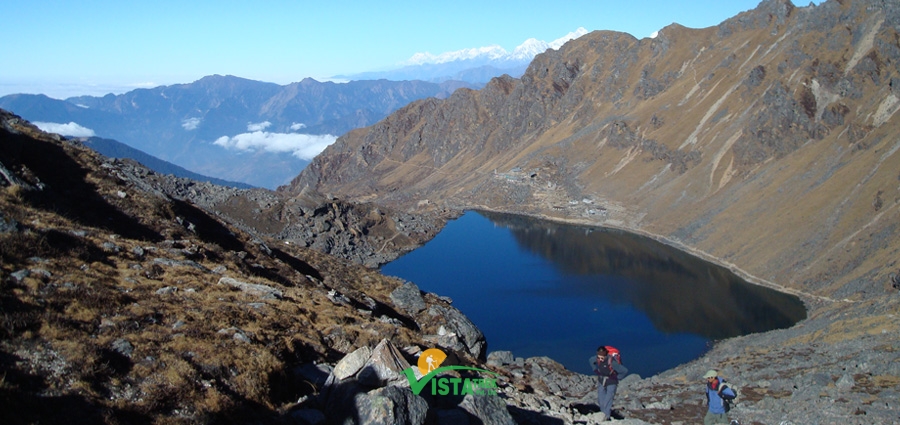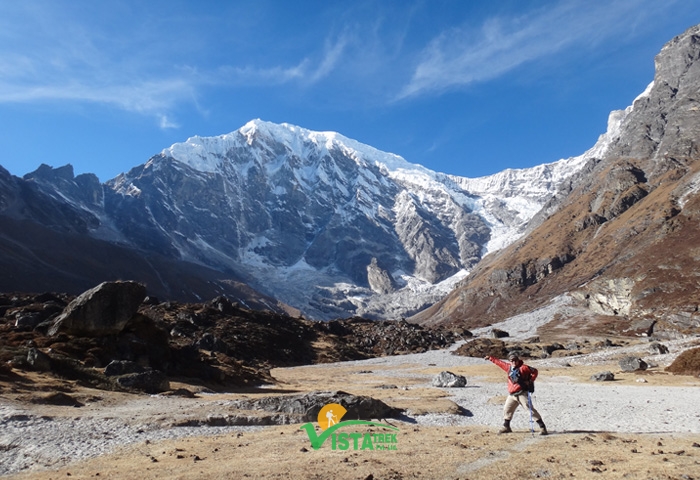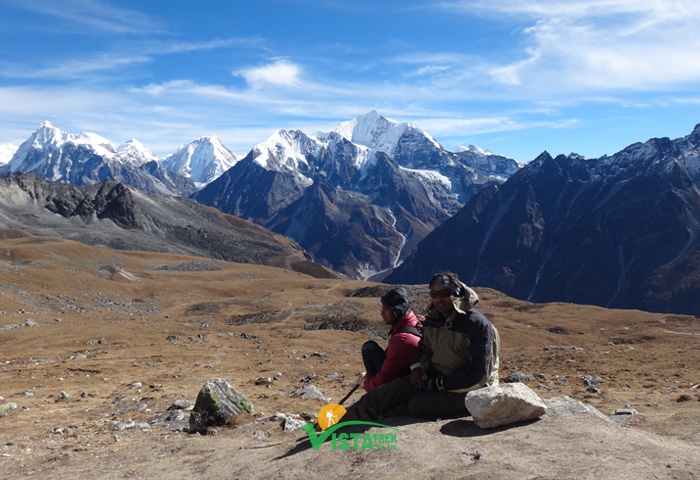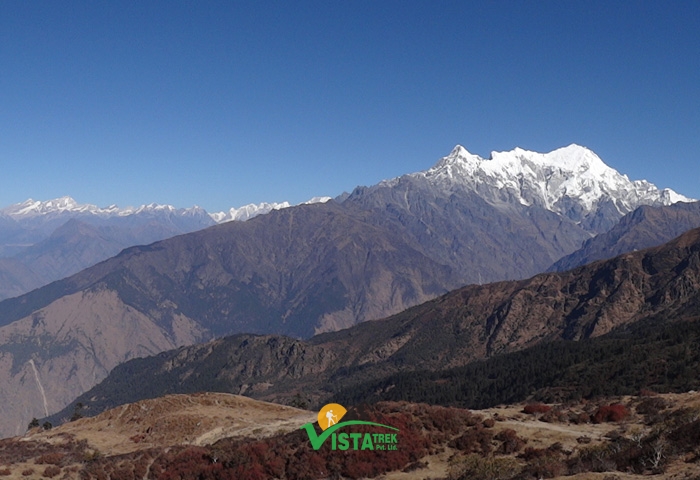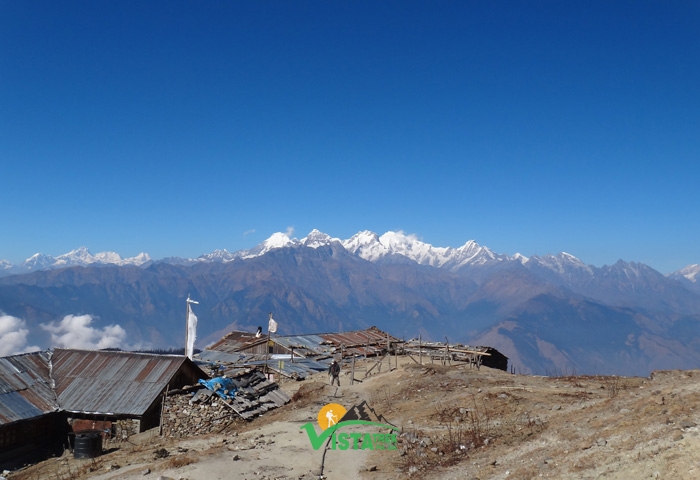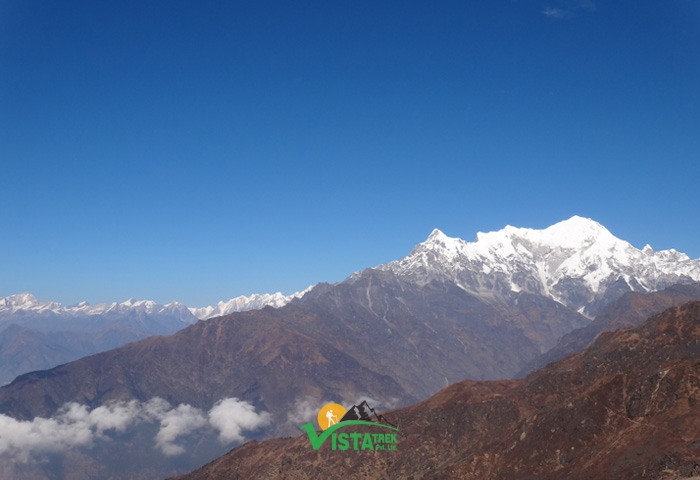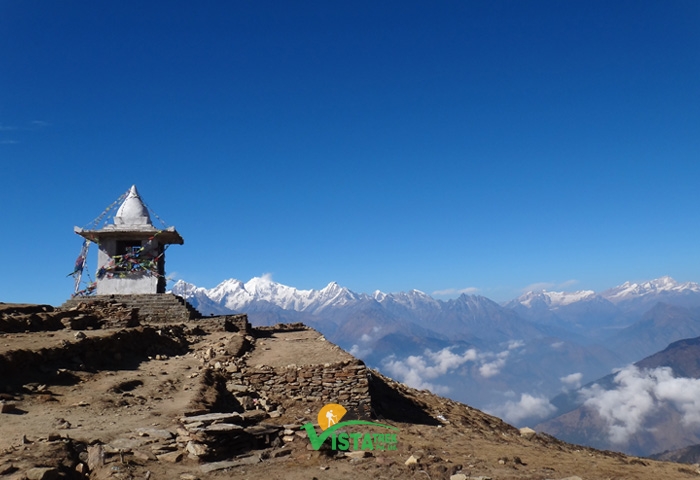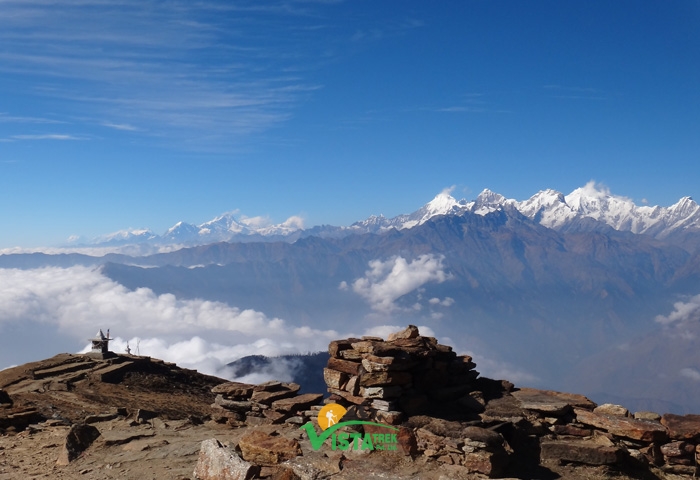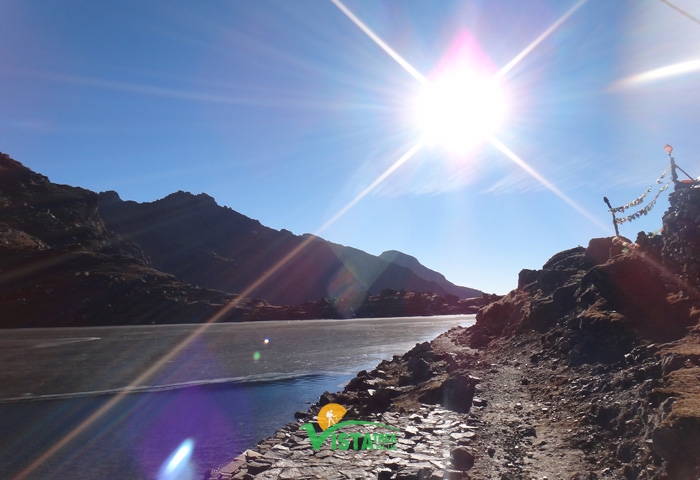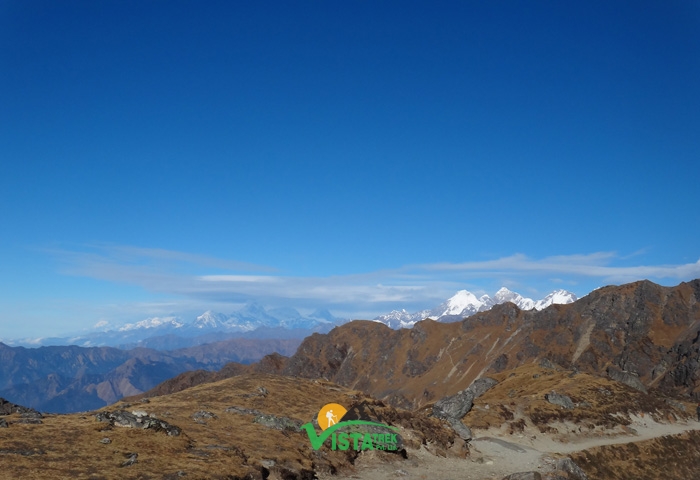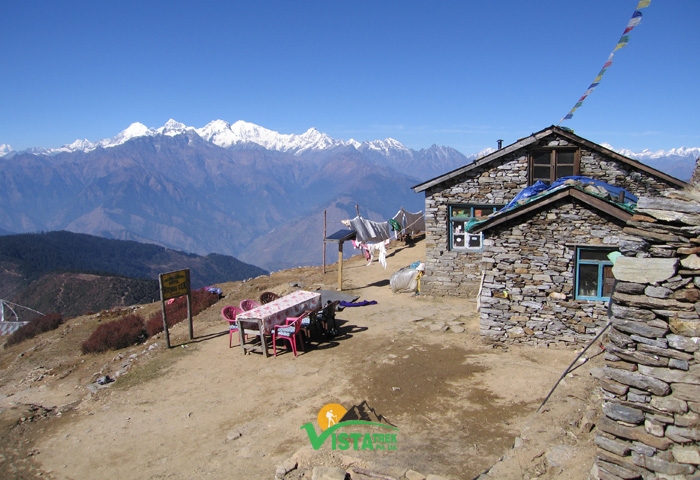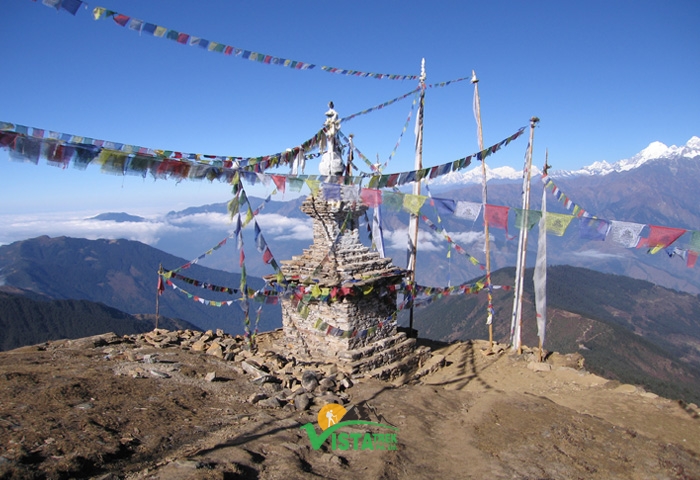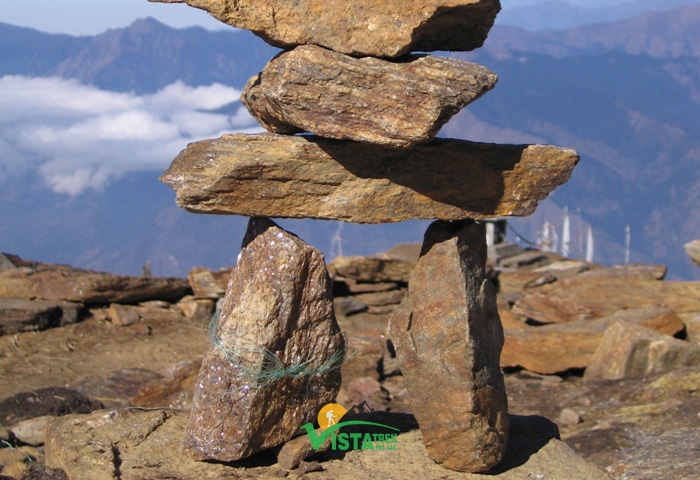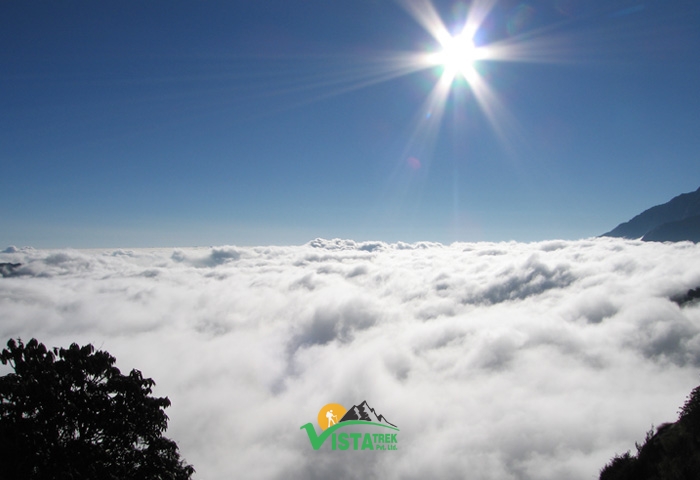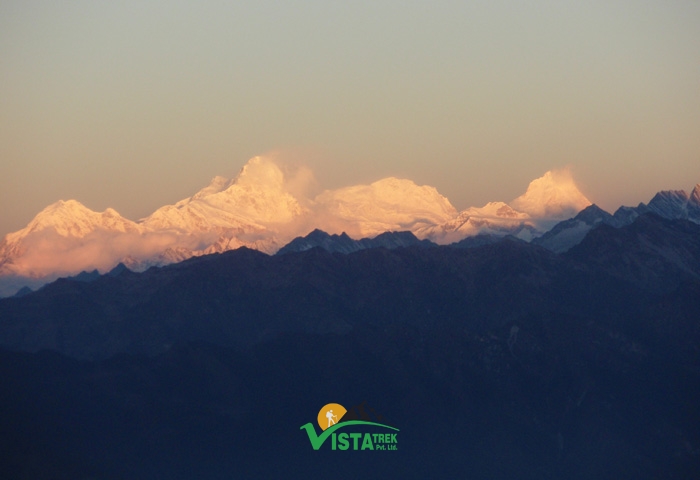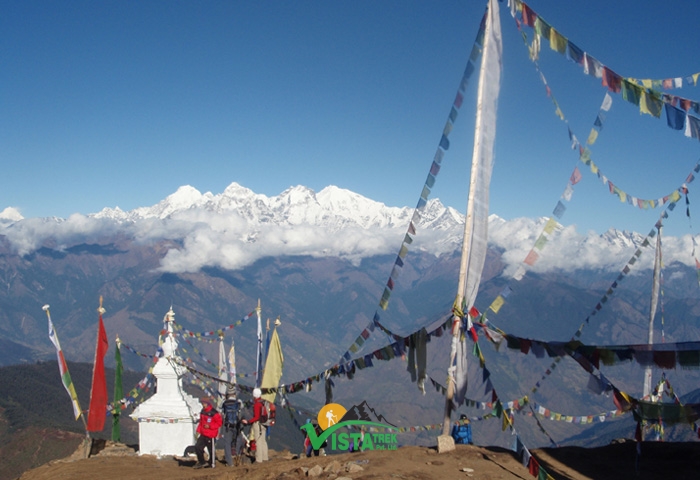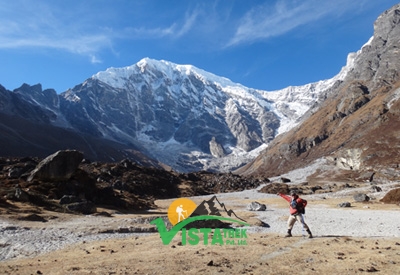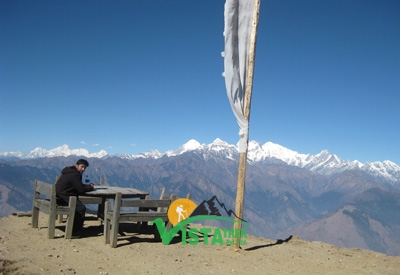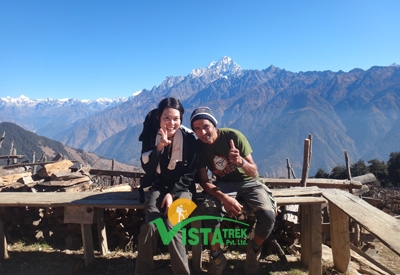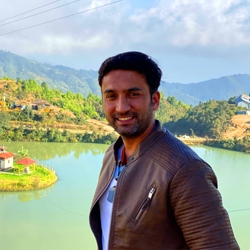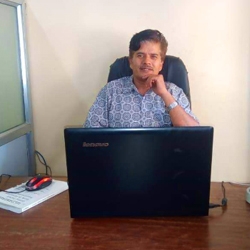Trip Facts
- Duration 9 Days
- Start FromKathmandu
- Group Size1-10 Pax
- End FromKathmandu
- Trip GradeEasy to Moderate
- Max Height 4600 m
- AccommodationTea House
- TransportationBus/Car
Best Season
Sept – Nov, & March – May
Trip Highlights
- Views of the Langtang, Ganesh, and Jugal Himal ranges
- Explore the sacred Gosainkunda Lake and enjoy its beauty
- Experience the culture of Tamang and Sherpa ethnic groups along the trekking trails
Trip Overview
The Gosainkunda Helambu Trek follows a sacred route and explores the lower Langtang region. The trip continues along the Shivapuri National Park and explores the Helambu Valley. Likewise, the trip culminates at the Gosainkunda Lake which bears great importance to Hindu and Buddhist adherents. Langtang and Dorje Lakpa ranges also allow the trekkers to relish the scenery of Himalayas on the trip. All in all, the trip combines the finest of natural beauty and religious excursion as well.
The short 9-days trek begins from the Kathmandu Valley and heads north to Dhunche. Then, you trek through the Langtang National Park and head towards Sing Gompa. The trail lies to the south of the popular Langtang Valley Trek and passes a few Tamang villages. Next, you trek along the Lauribinayak Danda spotting a few of the lakes in the Gosainkunda lake system. As you enjoy the views of the Langtang ranges, you will trek through small Tamang villages and pasture lands. Finally, you reach the Gosainkunda Lake and enjoy the surreal vicinity around the lake. Here, you can also explore around and revel in the beauty of the Langtang ranges. The history and religious origins of the lake are equally fascinating as well.
As the visit around the Gosainkunda Lake comes to an end, you will take a different route on the return. Heading southeast, the trail takes you to Ghopte. Then, you enter the Helambu Valley and relish the Sherpa culture as you head to Kutumsang. Further, you make a descent to Chisapani and admire the vista of the Ganesh, Jugal, and Langtang ranges. For the final part of the trek, you will hug the trails through the Shivapuri National Park and reach Sundarijal.
Best Time for Gosainkunda Helambu Trek
The months from September to November during autumn and March to May during spring are the best times for the trip. Also, trekkers with average fitness can do the trek.
Note: There are other beautiful Trekking routes in Langtang Region. For longer option, Tamang Heritage Trek is recommended while most popular trek is Langtang Valley trek . To enjoy traditional culture and lifestyle of mountain people, Helambu Trek is highly recommended.
Trip Itinerary
- Upon arrival at Tribhuwan Intl Airport in Kathmandu, a representative from Vista Trek waiting, well in time, to receive you, shall welcome you to this land of the towering Himalayas. Once reaching your hotel in a car from the airport, all you need to do is check in and enjoy the refreshment served.
- We then visit the Vista Trek office for discussion on trekking, introduction to the guide and porter and settlement of dues if any. Since you often still have some time left for a walk around Thamel, you can do so if you please.
- We start by heading off to Dhunche on a local bus early morning. The ride at least stops twice, for breakfast first, then lunch, and finally takes all to Dhunche in about six hours.
- We spend the night here.
- After a heavy breakfast, we leave for Deurali. Roughly an hour of almost flat trail along the banks of Trishuli, which at this stage before claiming the massive Bhote Koshi down the slope near Syaphrubeshi is merely a stream, brings all of us to a place where we need to cross the river. The next hour and half is a painful steep climb from here on, through a dense forest that is also home to many animals including bears. An encounter with one is a real possibility. We stop for a tea break in Deurali with a single teahouse.
- After the break, maintaining the same level of steepness, the trail, for the next two and a half hours, starts out through a dense forest that gradually changes to the one with tall pine trees by the time we reach Chandanbari. With 6-7 teahouses, a Gompa, a cheese factory and some land used for growing fresh vegetables for consumption, Chandanbari, also known as Sing Gompa, is where we stop, not only for our lunch and dinner but for the night as well.
- Our walk after breakfast today heads for Lauriibinayak. Still through the forest, a gradual uphill easy on the legs ends the comfort once we reach Cholangpatti in about an hour and a half. What could add to our adventure when walking through this part of the trek is a meeting with the rare Red Panda. With trees thinning out and shrubs and grasses taking over, the route turns sharper for the next hour and a half. On the slopes of a big hill and with a few teahouses sits Lauribinayak, the vantage point for a spectacular view. When facing North while waiting for lunch, the panorama of the Himalayas is what takes everyone’s breath away: starting with the entire Annapurna Range to the left, followed by Mt Manaslu and Ganesh Himal, then by some mountains in the bordering Tibet in the middle and Mt Langtang to the left.
- After lunch, we walk for about three hours to Gosaikunda. The incline still retainsthe previous sharpness for the first half an hour until we come to a temple. From here on, the course presents some respite to the legs in terms of difficulty for the next hour or so. However, the trail demands exercising caution, owing much to the possibility of stones falling from above. The first to arrive is the blue Saraswoti Kunda, the next, in about ten minutes’ time, the Bhairav Kunda, slightly bigger than Saraswoti and with a very dark look and finally, in the next twenty five minutes or so, the Gosaikunda, with around six teahouses. Walking around the lake after some rest and some refreshments is what many find a worthwhile engagement.
- We spend our night here.
- After a heavy breakfast, we head off for Lauribina Pass (4,615 metres). A walk of about three quarters of an hour up an exhausting ascent andSurya lake on the way forces most travelling through the land to stop for an average of ten minutes, using this time to appreciate the nature. Another half an hour from here, we reach the top of the Pass. The average amount of time spent atop is around ten minutes. The next to follow is a steep downhill for about two hours to Phedi. As Phedi approaches, the landscape starts seeing rhododendron trees, not very big in this area, appearing sporadically. We stop for lunch here.
- The way to Ghopte is a mix of uphillls and downhills, slightly more to the downhill. With two very typical teahouses, Ghopte, surrounded by trees and with dark rocky elevations close by is situated facing South.
- We spend the night here.
- With more than an hour of a downhill, followed by a 20-minute uphill, the trail, which happens to now pass through a forest, brings everyone to Thadepatti for a tea break. Once again, the view from the ridge above makes many pull their cameras out.
- The next hour and a half to Magengoth is a combination of flats and downs changing around every quarter of an hour. While many find the flats refreshingly comfortable, they find the descents demanding on the body. Magengoth, built as a place for rearing domestic mammals and cultivation, now has teahouses ready to serve any traveler and a security post with a view to protecting the Conservation Area, serving increasingly the purpose of the latter than the one of the former.
- After lunch in Magengoth, we start our trek to Kutumsang on a path similar to the one walked before. On this roughly three-hour walk, perhaps, somewhere in the middle, awaits two tea huts at some distance from one another. With the main purpose of selling tea and whatever goes with it, the one first often seems to attract many en route. Kutumsang, with relatively comfortable hotels and a Chaitya, is where we spend the night today.
- After breakfast, we head off to Gulfu Bhanjyang, our stopover for lunch. As we walk towards our destination on a route, which is a mix of flats and downhills, the vegetation gets greener, denser and bigger. Gulfu Bhanjyang is a village very similar to Kutumsang with one major difference, however. While Kutumsang has forests on two directions, South and North, we can see the same only to the North in Gulf Bhanijyang.
- After lunch, we walk through mostly cultivated land with one or two houses here and there for one hour to Firfiré. Once atop Firfiré, the refreshing wind blowing at a speed just right for almost everyone and a view that seems to represent the whole Region at a glance are certain to force a break of at least half an hour. Next to follow is a downhill that lasts for about forty minutes until we reach Party Bhanjyang, one more settlement our trail passes through. From here on, the route turns into a steep ascent. With green pastures to rest the legs here and there along the way, this sharpness continues for an hour or so all the way to Chisapani. This settlement too is no miserly in showcasing the mountains to its North: Mt Annapurna, Mt Manaslu, Ganesh Himal, Langtang Himal, Dorje Lakpa as well as Mt Gaurishanker.
- We spend the night here.
- After breakfast, we start our walk through Shivapuri National Park and come to Mulkharka, a settlement on the way, in about three hours. The next 45 minutes or so brings us all to Sundarijal, inside Kathmandu Valley to the North-East. A ride in a vehicle for around an hour from Sundarijal leaves us at the gates of our hotels in Kathmandu.
- In the evening, please allow us the pleasure of your company during the fare-well dinner organized by Vista Trek.
- If you have a morning flight, we leave for Tribhuwan Intl Airport early morning in a car arranged by the office.
- If your flight is in the late afternoon or evening, only your WILL shall dictate your involvement or indulgence as you may please before leaving for Tribhuwan Intl Airport in a vehicle.
Cost Includes
- Pick up and transfer by car from Airport-Hotel-Airport.
- 2 nights standard hotel accommodation in Kathmandu.
- Breakfast, lunch and dinner during the trek.
- Local lodges accommodation during the trek.
- Government licensed guide, (including his food, salary, accommodation, equipment, medicine & insurance).
- All local transportation.
- All necessary permits and entry fees.
- All government taxes.
- Medical kit box.
- Rescue assistance.
- Necessary equipment (sleeping bags, down jackets etc. if needed).
- Our service charge.
Cost Excludes
- Meals in Kathmandu.
- International airfare.
- Nepal entry visa fee ($40).
- Your travel insurance (should include your medical and rescue).
- Any personal expenses like hot shower and battery charges fees
- Any kind of hot and cold drinks.
- Staff & driver tipping.
Trip Map
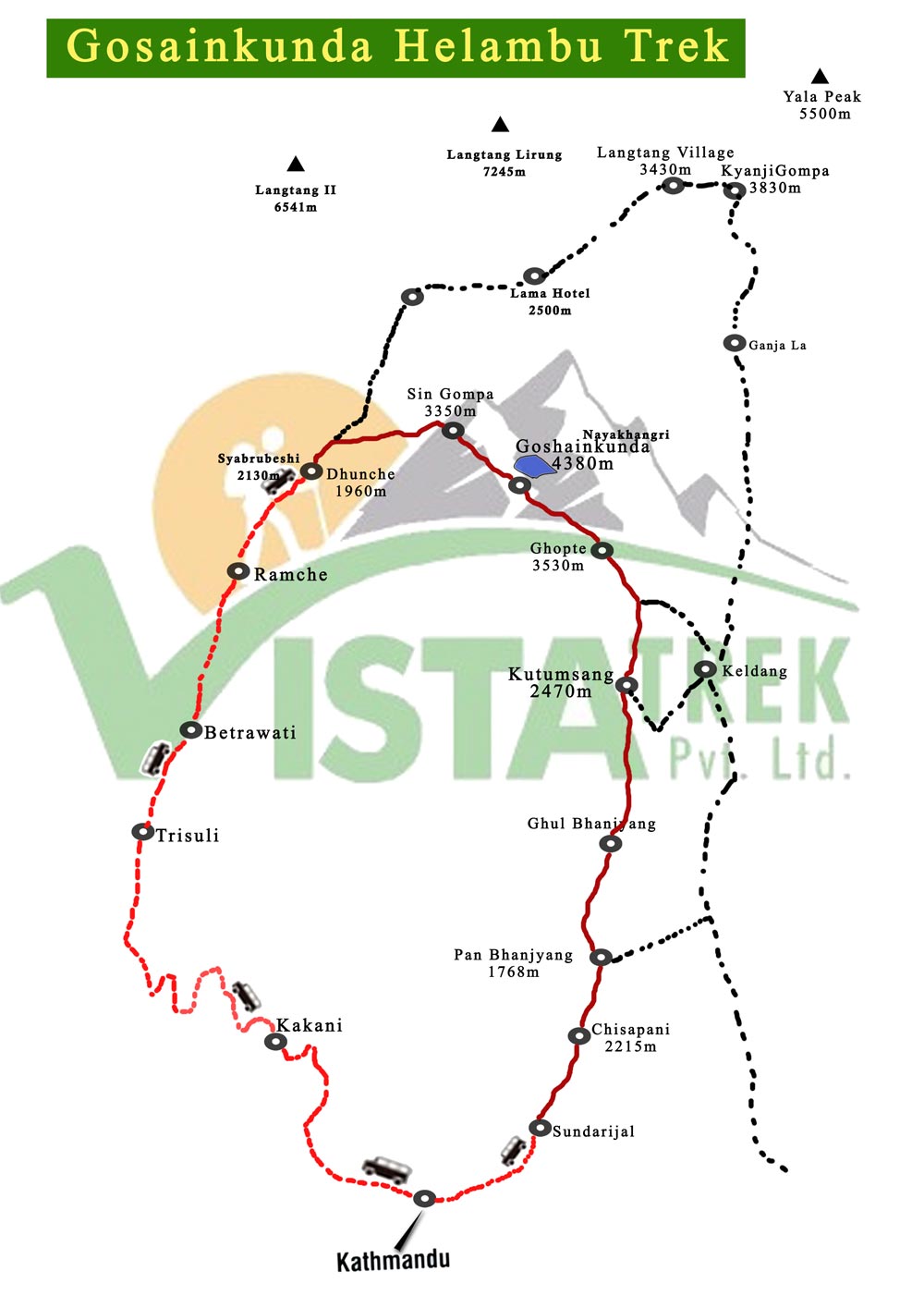
Useful Info
About Accommodation.
In Kathmandu, we will accommodate you at Hotel Himalayan Traveller’s Inn, and In Pokhara at Hotel Trekkers’ Inn. Local lodges accommodation provided during the trek on twin sharing basis. Hotel in Kathmandu and in Pokhara comes with private bathroom , however in mountain, toilet and shower will be on sharing basis. In the busy months, (October/November & April/ May) you may have to share the room with other traveler as some villages have limited number of local lodges .
About Meal
You can enjoy typical Nepali food as well as continental , Italian, Indian and Tibetan. Dinner and breakfast serve at the teahouse where we stay and lunch will be served on the way to next destination. In Kathmandu and in Pokhara, only breakfast is provided. If you are a vegetarian or vegan, no worries, Nepal is such a easy place to get several vegetarian options.
About Staff:
A Guide and a porter assist you from Kathmandu to Kathmandu. In a group with more than 8 clients, 2 guide will be provided. A porter provided for 2 trekkers, and carries between 15 to 20 K.G.
About Equipments
Following Equipment list is recommended to bring for the trek.
Down Sleeping Bag, Down Jacket, Long sleeved shirt, Jumper or fleecy jacket, T – shirts, Trekking shoes or boots, Comfy shoes for around the camp, thick and warm woolen socks, Light cotton socks , A day bag to carry your valuable, Sun hat, Woolen hat, Gloves, rain coat, Sun block, lip balm , Goggles or sunglasses, Long underwear, Thermal wear, Nylon windbreaker, Nylon wind pants, Water bottle, Sewing kit, Medical & first aid kit, Flash light, Batteries and bulbs, Swiss army knife, Towel and toiletries etc. Please kindly check our Equipment list for complete details.
Temperature
Temperature in Langtang vary as per the elevation and season. Spring (March to May) and Autumn (September to December) is quite warm that you can walk with t-shirts and shorts during day. It can be hot and humid in starting days. Above 3000, day time temperature is around 5-10 °C and night time temperature is below 0 °C. Langtang is cold through out a year and night time temperature can reach up to–20 °C in winter. There are no heating system inside the room in guest houses, therefore it is important to prepare warm clothes and sleeping bag for the trek.
Physical Fitness and experience
Gosaikunda Helambu Trek is a moderate which is fit for those who has the ability to walk 5-6 hours ups and down in a day carrying own day bag. Some days are even longer with 7- 8 hours of walking. Gosaikunda Helambu is high altitude trek which demands more physical fitness,however if you are strongly determined and have excellent health and average physical fitness can complete this trek. Few weeks prior to the trip, doing some physical exercise is better . No technical skill is needed however past experience also helps . If you are taking medicine for heart, lung or for blood diseases, please kindly consult your doctor and inform to Vista Trek P. Ltd.
About Insurance,
You have to obtain the travel insurance which should cover emergency evacuation and medical expenses. Some Insurance policy’s cover only up to 4000 meter, so please kindly confirm with the insurance company before you purchase it.
About Seasons
Spring (March to May) and Autumn (September to November) are the best months for Gosaikunda Helambu Trek. You can do it in winter (December to February )if you are used to with extreme cold temperature.
About Bus Drive
Highway in Nepal are safe, however sometime transport can be halted due to landslide , strike or by political issues. In such case trip itinerary will be affected. Thus, we would like to request you to add few days extra in Kathmandu. If you complete your trip smoothly, then you can enjoy your time with other activities like sightseeing, White water rafting. Jungle activities or more.
Please cheque our FAQs for various issues of the trek




